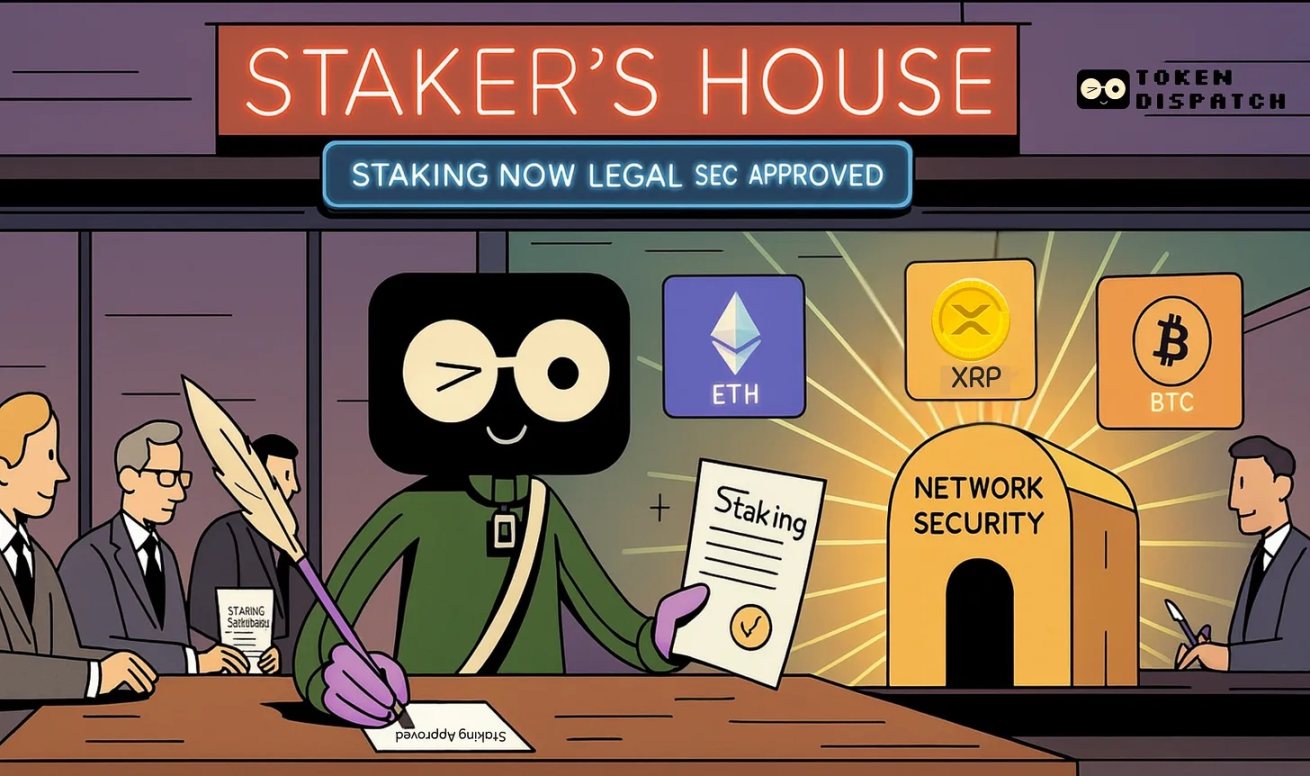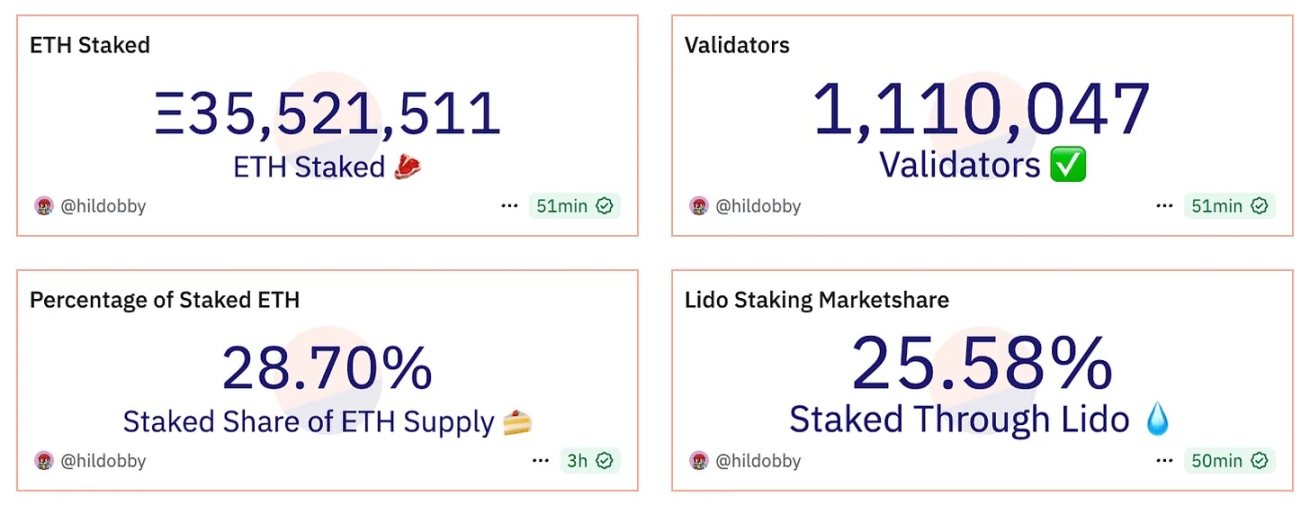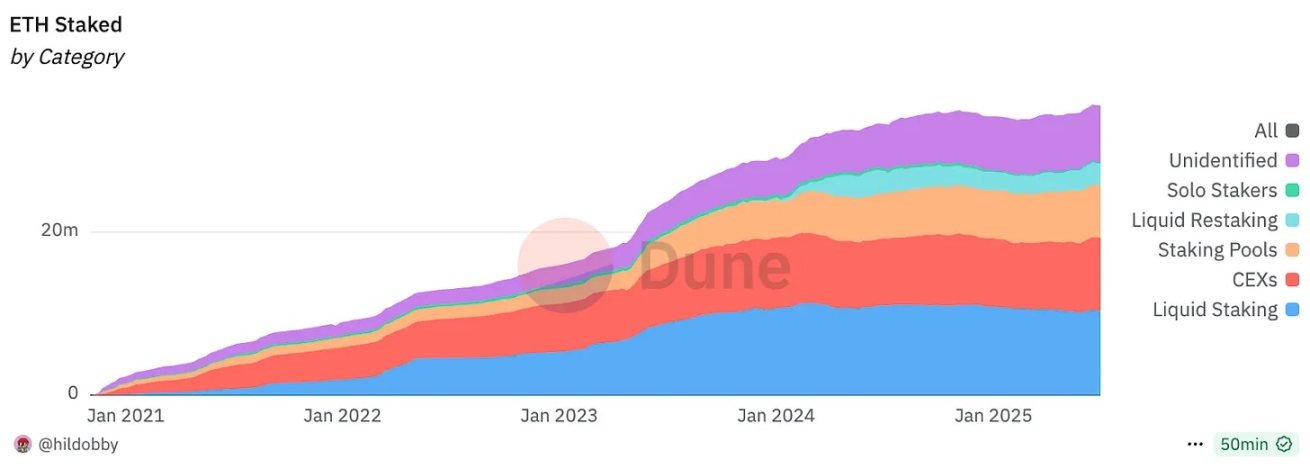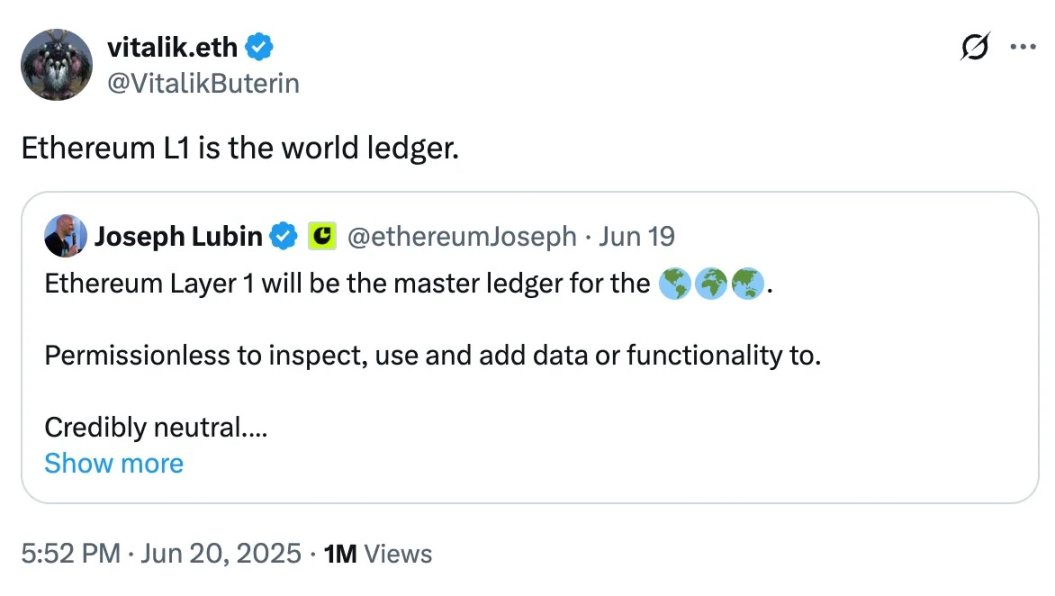Written by: THEJASWINI M A
Translated by: Saoirse, Foresight News
In 1688, captains gathered at Edward Lloyd's coffeehouse in London, seeking those willing to insure their voyages. Wealthy merchants would sign their names beneath the details of the ships, becoming "underwriters," risking their personal wealth to guarantee these high-risk ventures.
The better the reputation of the underwriters, the safer the voyage was for the captains. The safer the system, the more business it attracted. The deal was simple: provide funding, reduce risk for everyone, and then share in the profits.
After studying the new regulations from the U.S. SEC, it becomes clear that cryptocurrency has actually digitized the model invented by those underwriters in the coffeehouse: people earn returns by taking on risks with their assets, thereby making the entire system safer and more trustworthy.

Staking has now been brought back to the forefront.
On May 29, 2025, a major change occurred. On this day, the U.S. government made it clear that staking would not lead to legal disputes. First, it is necessary to recall why this point is so important at this moment.
In a staking mechanism, you lock up tokens to enhance the security of the network and earn stable returns.
Validators use their staked tokens to verify transactions, package new blocks, and ensure the smooth operation of the blockchain. In return, the network pays them newly minted tokens and transaction fees.
Without stakers, proof-of-stake networks like Ethereum would collapse.
Of course, you can stake your tokens, but no one knows if the U.S. SEC will suddenly show up one day, claiming you are conducting an unregistered securities offering. This regulatory uncertainty has left many institutions on the sidelines, enviously watching retail stakers earn annualized returns of 3%-8%.
The Wave of Mass Staking is Coming
On July 3, the Rex-Osprey Solana + Staking ETF officially launched, becoming the first fund in the U.S. to offer direct cryptocurrency exposure along with staking rewards. The fund holds SOL tokens through a subsidiary in the Cayman Islands and stakes at least half of its holdings.
"This is the first staking cryptocurrency ETF in the U.S.," announced Rex Shares.
And they are not the only ones launching such products.
- Robinhood has just launched cryptocurrency staking services for U.S. users, initially supporting Ethereum and Solana;
- Kraken has added Bitcoin staking through the Babylon protocol, allowing users to hold Bitcoin on the native chain while earning returns through staking;
- VeChain has launched a $15 million "StarGate" staking program;
- Even Bit Digital is selling off its entire Bitcoin mining business to focus on Ethereum staking.
(Note: Bit Digital is a Nasdaq-listed company, stock code: BTBT, headquartered in New York, USA, with its Asia headquarters in Hong Kong. It was formerly known as the Chinese P2P lending platform "DianNiu Financial," which transformed into a cryptocurrency mining company through business restructuring in 2020 and rebranded as Bit Digital, becoming one of the first publicly listed Bitcoin mining companies globally.)
So, what exactly has changed?
The Double Regulatory Domino Effect
First, the SEC's staking guidance** issued on May 29, 2025.**
This guidance states that if you stake your cryptocurrency to help the blockchain operate, this action is completely compliant and not considered a high-risk investment or security.
This includes solo staking, delegating tokens to others for staking, and staking through trusted exchanges, as long as your staking activity directly aids the network's operation. This excludes most staking activities from being classified as "investment contracts" under the "Howey test." This means you no longer need to worry about violating investment regulations by earning returns through staking.
(Note: The Howey test is a key criterion used by the SEC to determine whether a cryptocurrency is classified as a "security.")
The only thing to be cautious about is the promise of guaranteed returns, especially when combining staking with lending or launching so-called "DeFi composite products" that promise fixed returns or engage in flashy operations like liquidity mining.
Second, the CLARITY Act.
This is a proposed bill in the U.S. Congress aimed at clarifying the regulatory jurisdiction of different digital assets. The bill specifically aims to protect node operators, staking participants, and self-custody wallet users, ensuring they are not treated like Wall Street brokers.
The bill introduces a new category of digital goods called "investment contract assets," establishing specific standards for defining digital assets as securities (regulated by the SEC) or commodities (regulated by the CFTC). The bill also sets up a "maturity" assessment mechanism for blockchain projects or tokens, allowing them to shift from SEC regulation to CFTC regulation, and imposes time limits on SEC reviews to prevent regulatory delays.
So, what does this mean for you?
Thanks to the SEC's regulatory guidance, you can now more confidently engage in cryptocurrency staking in the U.S. If the CLARITY Act passes, everyone interested in staking or cryptocurrency investment will enjoy a clearer and safer operational environment.
Staking income is still taxed as ordinary income when you gain "dominant control" over it; if you later sell and realize a profit, capital gains tax applies. All staking income, regardless of the amount, must be reported to the U.S. Internal Revenue Service.
Who Will Be the Focus? Ethereum
However, its price remains around $2,500.

Despite the lackluster price performance, Ethereum's staking data is impressive. The total amount of staked ETH has surpassed 35 million, reaching an all-time high and accounting for nearly 30% of the circulating supply. Although the related infrastructure has been under development for months, its strategic value is now explosively highlighted in the wake of regulatory clarity.


https://dune.com/queries/1941407/3202651
What Major Moves Are Corporate Boards Planning?
BitMine Immersion Technologies has just completed a $250 million financing round, specifically for purchasing and staking ETH, with Fundstrat founder Tom Lee serving as chairman. The company believes that the returns from staking combined with price appreciation will surpass traditional government bond assets.
SharpLink Gaming has taken this strategy to the extreme: its ETH reserves have expanded to 198,167 tokens, achieving 100% full staking. In just one week in June, its staking returns reached 102 ETH, exemplifying the "lock-up generates wealth" model.
Meanwhile, issuers of Ethereum ETFs are lining up to apply for staking qualifications. Bloomberg analysts predict a 95% chance that staking ETFs will receive regulatory approval in the coming months. BlackRock's head of digital assets has stated that the staking mechanism will be a "disruptive turning point" for Ethereum ETFs, a judgment that is quite persuasive.
If approved, these staking ETFs are expected to reverse the outflow of funds from Ethereum funds since their inception. When investors can simultaneously gain price exposure and staking returns, who would be satisfied with just price volatility returns?

https://x.com/VitalikButerin/status/1936036966904308203
When Cryptocurrency Speaks Wall Street's Language
For years, traditional finance has struggled to understand the value proposition of cryptocurrency. Digital gold? Perhaps. Programmable money? Sounds too complicated. Decentralized applications? What’s wrong with centralized applications?
But the term "yield" is something Wall Street absolutely understands. Indeed, bond yields have rebounded from near-zero lows in 2020, with the one-year U.S. Treasury yield returning to around 4%. But imagine a regulated crypto fund that can generate 3-5% in staking returns annually while also providing the potential for asset appreciation—this is incredibly attractive.
The core lies in the breakthrough of legitimacy. When pension funds can gain exposure to Ethereum through a compliant ETF, while that fund generates returns by securing the network, it is undoubtedly a milestone for the industry.
The network effect has become clear: more institutions participate in staking → network security improves → attracting more users and developers → expanding application scale increases transaction fees → staking returns rise further. This is a virtuous cycle benefiting all participants.
You don’t need to understand blockchain technology, nor do you have to believe in decentralization; just grasp the simple logic that "holding assets can generate profits." You don’t need to subscribe to Austrian economics or question central bank authority; just understand the value of "productive capital assets." Essentially, the network needs security guarantees, and the guardians should receive reasonable compensation.
免责声明:本文章仅代表作者个人观点,不代表本平台的立场和观点。本文章仅供信息分享,不构成对任何人的任何投资建议。用户与作者之间的任何争议,与本平台无关。如网页中刊载的文章或图片涉及侵权,请提供相关的权利证明和身份证明发送邮件到support@aicoin.com,本平台相关工作人员将会进行核查。




